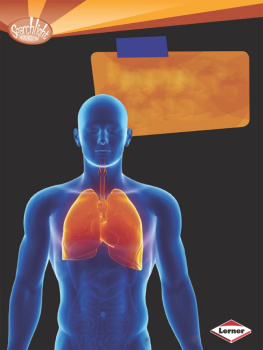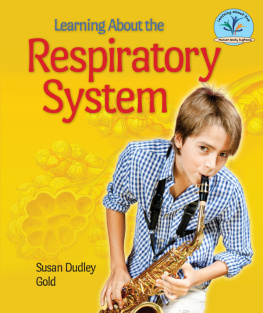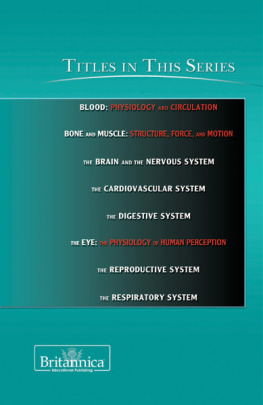Landmarks
List of Figures
List of tables

SECOND EDITION
Equipment for
Respiratory Care
Teresa A. Volsko, MBA, MHHS, RRT, CMT-E, FAARC
Director, Respiratory Care
Akron Childrens Hospital
Robert L. Chatburn, MHHS, RRT-NPS, FAARC
Clinical Research Manager, Respiratory Institute Cleveland Clinic Associate Professor, Department of Medicine Lerner College of Medicine of Case Western Reserve University
Mohamad F. El-Khatib, MD, PhD, MBA, RRT
Professor, Department of Anesthesiology
American University of Beirut School of Medicine
Director of Respiratory Therapy Department
American University of Beirut Medical Center

JONES & BARTLETT
LEARNING

World Headquarters
Jones & Bartlett Learning
5 Wall Street
Burlington, MA 01803
978-443-5000
www.jblearning.com
Jones & Bartlett Learning books and products are available through most bookstores and online booksellers. To contact Jones & Bartlett Learning directly, call 800-832-0034, fax 978-443-8000, or visit our website, www.jblearning.com.
Substantial discounts on bulk quantities of Jones & Bartlett Learning publications are available to corporations, professional associations, and other qualified organizations. For details and specific discount information, contact the special sales department at Jones & Bartlett Learning via the above contact information or send an email to .
Copyright 2022 by Jones & Bartlett Learning, LLC, an Ascend Learning Company
All rights reserved. No part of the material protected by this copyright may be reproduced or utilized in any form, electronic or mechanical, including photocopying, recording, or by any information storage and retrieval system, without written permission from the copyright owner.
The content, statements, views, and opinions herein are the sole expression of the respective authors and not that of Jones & Bartlett Learning, LLC. Reference herein to any specific commercial product, process, or service by trade name, trademark, manufacturer, or otherwise does not constitute or imply its endorsement or recommendation by Jones & Bartlett Learning, LLC and such reference shall not be used for advertising or product endorsement purposes. All trademarks displayed are the trademarks of the parties noted herein. Equipment for Respiratory Care, Second Edition is an independent publication and has not been authorized, sponsored, or otherwise approved by the owners of the trademarks or service marks referenced in this product.
There may be images in this book that feature models; these models do not necessarily endorse, represent, or participate in the activities represented in the images. Any screenshots in this product are for educational and instructive purposes only. Any individuals and scenarios featured in the case studies throughout this product may be real or fictitious, but are used for instructional purposes only.
19629-0
Production Credits
VP, Product Management: Amanda Martin
Director of Product Management: Cathy L. Esperti
Product Specialist: Rachael Souza
Product Coordinator: Elena Sorrentino
Project Manager: Kristen Rogers
Project Specialist: Madelene Nieman
Project Specialist, Navigate: John Coakley
Digital Project Specialist: Rachel DiMaggio
Marketing Manager: Michael Sullivan
VP, Manufacturing and Inventory Control: Therese Connell
Composition: S4Carlisle Publishing Services
Cover Design: Scott Moden
Text Design: Michael ODonnell
Senior Media Development Editor: Troy Liston
Rights Specialist: Rebecca Damon
Cover Image (Title Page, Part Opener, Chapter Opener): SidorArt/Shutterstock
Printing and Binding: LSC Communications
Library of Congress Cataloging-in-Publication Data
Names: Volsko, Teresa A., editor. | Chatburn, Robert L., editor. | El-Khatib, Mohamad F., editor.
Title: Equipment for respiratory care / edited by, Teresa A. Volsko, Robert L. Chatburn, Mohamad F. El-Khatib.
Description: Second edition. | Burlington, Massachusetts : Jones & Bartlett Learning, [2022] | Includes bibliographical references and index.
Identifiers: LCCN 2020007426 | ISBN 9781284196221 (paperback)
Subjects: MESH: Respiratory Therapy--instrumentation | Respiratory Tract Diseases--therapy
Classification: LCC RC735.I5 | NLM WF 26 | DDC 615.8/3620284--dc23
LC record available at https://lccn.loc.gov/2020007426
6048
Printed in the United States of America
24 23 22 21 20 10 9 8 7 6 5 4 3 2 1
Dedication
I dedicate this book to the respiratory students whose quest for knowledge inspired me to find new and innovative ways to maximize their educational experience and to my family, whose love and support allowed me to pursue my dreams!
Teresa A. Volsko
Learning and teaching are fundamental to existence. I dedicate this book to all those who understand that to achieve extraordinary results you must live an uncommon life.
Robert L. Chatburn
To Mayssa, Farouk, Dina, and Manarthanks for your love and support. You are the joy of my life.
To my mother, Souad, and to the soul of my father.
Mohamad F. El-Khatib

Anna RubaK/ShutterStock, Inc.
Brief Contents

Anna RubaK/ShutterStock, Inc.
Contents

Anna RubaK/ShutterStock, Inc.
Foreword
T hroughout my career, I have found that airway management is the major role of the respiratory therapist, whether opening and maintaining a closed airway or sustaining breathing through mechanical ventilation. With this role comes an expectation of being the expert on all the equipment that is needed to maintain an airway and provide ventilation. This expertise is what sets respiratory therapists apart from other hospital personnel. Biomedical engineers know how equipment works by its mechanical design, and anesthesia personnel know how to ventilate patients in the controlled environment of the operating room. But troubleshooting skills and knowledge of airway and ventilation equipment separate the respiratory care professional from these other professionals.
Troubleshooting is an important skill for any respiratory therapy student to learn and for all practicing respiratory therapists to maintain. Troubleshooting involves locating and correcting technical problems related to the machinery used in patient care. Under most circumstances, this requires logical reasoning, as opposed to problem posing and problem solving. Troubleshooting is always essential in clinical practice because members of the medical team in the ICU rely on respiratory therapists technical expertise to advise, explain, and troubleshoot equipment used for airway management and mechanical ventilation. Respiratory therapists work in teams, but there are times when they must work without assistance. It is in such circumstances that troubleshooting respiratory care equipment is most crucial. The topic of troubleshooting in respiratory therapy is taught at a level that cannot be found in the core curriculum of medical or nursing schools. Thus, it is a unique skill of respiratory therapists that is not shared by other allied health clinicians, nurses, and physicians.











